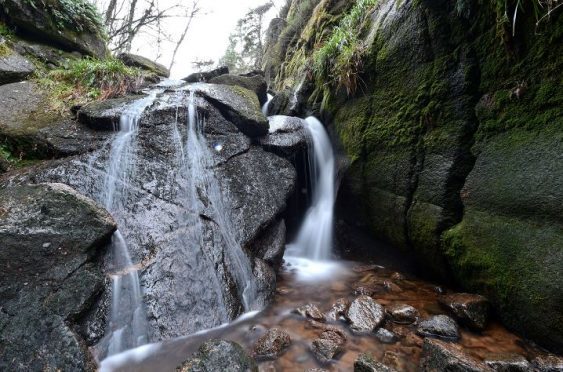A plan to enhance one of Aberdeenshire’s most breathtaking natural wonders has been lodged with the local authority.
Scottish Natural Heritage (SNH) hopes to boost the visitor experience at the Burn O’ Vat, near Dinnet, by building a new bridge on the pathway around the feature.
As part of the Muir of Dinnet National Nature Reserve, and neighbouring Loch Kinord, the water-gouged bowl is one of the region’s most popular attractions.
The Burn O’ Vat is a giant pothole formed by the watermelt of a massive glacial ice sheet almost 14,000 years ago, during the last ice age.
It has entered into local folklore, and is said to have been the hide-out of notorious cattle thief, Patrick Macgregor, known as Gilderoy, and his gang of outlaws, who terrorised Aberdeenshire during the reign of Charles I.
Last night, SNH said it hoped that replacing the current, 20-year-old bridge across the Vat Burn, with new foundations, would open up the woodlands around the area to the 50,000 people who visit every year.
A planning application for the structure has now been lodged with Aberdeenshire Council.
Catriona Reid, SNH’s Muir of Dinnet National Nature Reserve manager, said: “The route to the Vat is our most heavily-used path in the reserve.
“It’s a fairly easy path of about a mile, so most people can manage to get at least a bit of the way around – it’s a great way to enjoy the outdoors and get some exercise.
“One of the old footbridges on the path is more than 20 years old though, and is coming to the end of its life.
“We plan to replace it with another standard wooden bridge, but with a higher specification. It won’t have supports in the water, as the current bridge does, so it should last longer than the existing bridge.
“We’re waiting for planning approval for the bridge, and we hope to be able to build the new bridge in the autumn – after the busy summer season, but before the winter weather.
“We have about 50,000 visitors to the Muir of Dinnet every year. Most of those visit the Burn O’ Vat as it’s such an impressive and unusual place: a giant pothole, 15m (49ft) across, formed by glacial meltwaters.”
